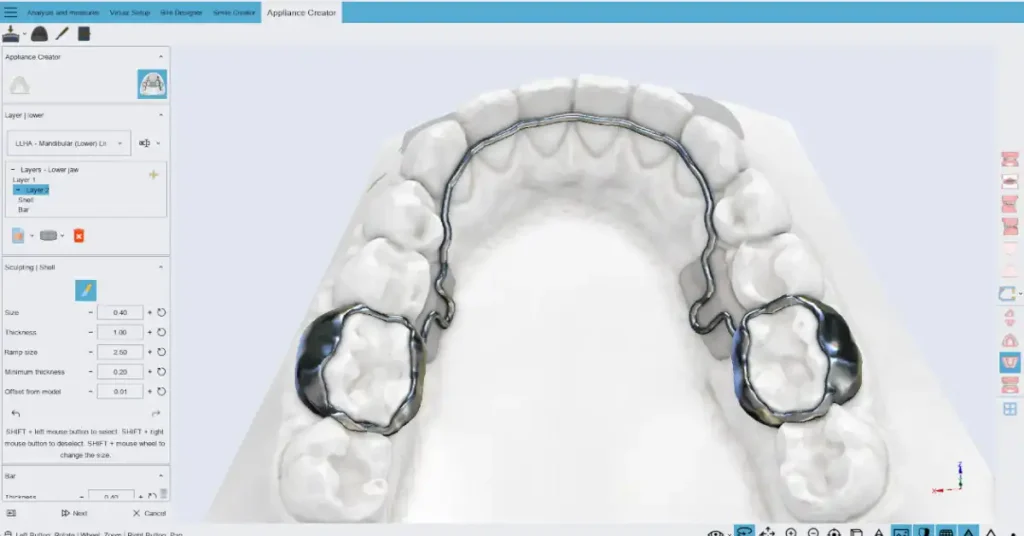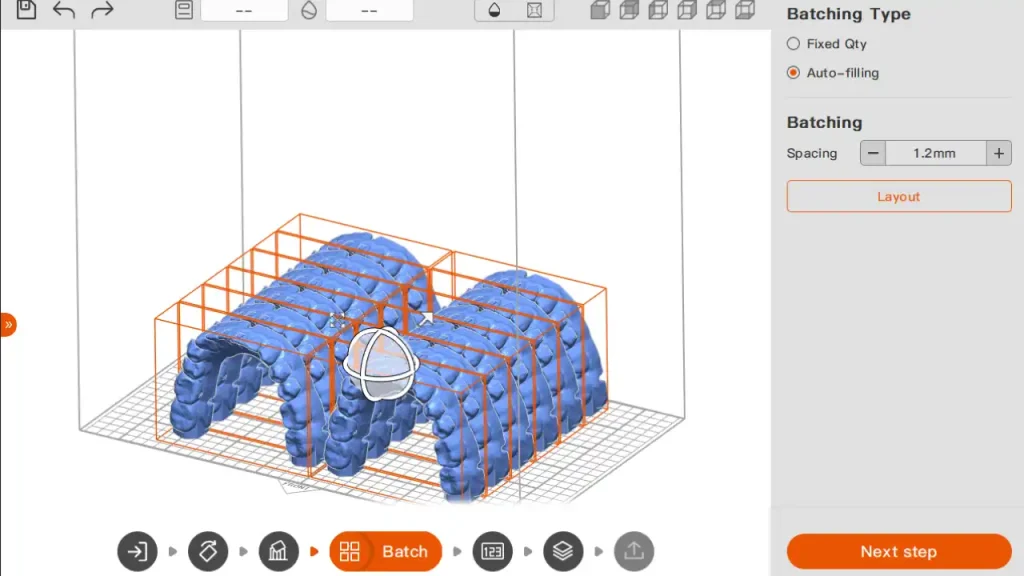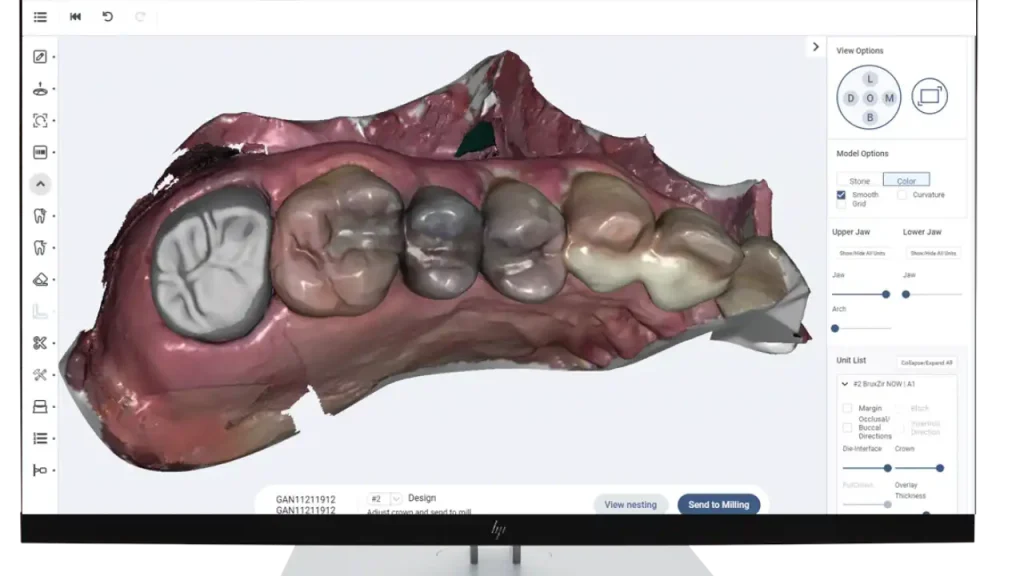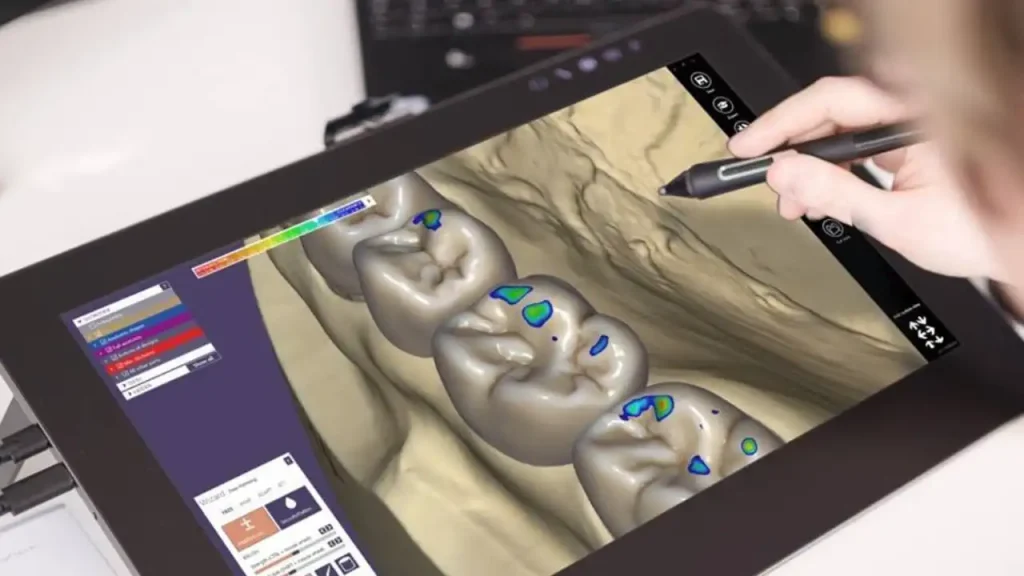
3D Dental Design Software
The field of dentistry is rapidly embracing digital technologies, and 3D dental design software is at the forefront of this transformation. From prosthodontics and orthodontics to implantology and restorative dentistry, these powerful software solutions are revolutionizing how dental professionals plan, design, and create dental restorations and appliances. This article provides an in-depth review and comparison of leading 3D dental design software options available in the market, evaluating them based on key criteria to help dental professionals make informed decisions. Companies like Futuremirates understand the critical role of selecting the right software, offering both top-tier solutions and the expertise to guide practices through this digital transition.
Overview of 3D Dental Design Software
3D dental design software, often referred to as Dental CAD (Computer-Aided Design) software, allows dental professionals to create precise, virtual models of a patient’s teeth and surrounding structures. These models are then used to design a wide range of dental restorations, appliances, and surgical guides. The software works in conjunction with intraoral scanners (which capture the initial digital impression) and CAM (Computer-Aided Manufacturing) technologies like 3D printers and milling machines, which fabricate the final product.
The benefits of using 3D dental design software are substantial:
- Enhanced Precision: Digital design eliminates the inaccuracies inherent in traditional manual methods, leading to better-fitting restorations and improved patient outcomes.
- Increased Efficiency: The digital workflow significantly reduces design and fabrication time, streamlining the entire process from scan to final product.
- Improved Patient Communication: Realistic 3D visualizations allow patients to better understand their treatment plans and expected outcomes.
- Predictable Results: Digital planning and design minimize errors and allow for greater control over the final result.
3D dental design software can be broadly categorized as:
- Open Source vs. Commercial: Open-source options offer cost-effectiveness and customization, while commercial software typically provides more comprehensive features, support, and regular updates.
- Specialized vs. General-Purpose: Some software is tailored to specific dental specialties (e.g., orthodontics), while others offer a broader range of design capabilities.
Evaluation Criteria

This review evaluates each software solution based on the following critical criteria:
- Design Features and Tools: Range and sophistication of design tools, libraries of anatomical teeth and components, modules for different dental specialties (crown & bridge, implants, dentures, orthodontics), and advanced features like virtual articulators and smile design tools.
- Usability and User Interface: Intuitiveness of the interface, ease of navigation, learning curve, and overall workflow efficiency. This includes the presence of wizards, guides, and automated features.
- Accuracy and Precision: The software’s ability to create accurate and precise dental models and restorations, minimizing errors and ensuring optimal fit.
- Compatibility and Integration: Compatibility with various file formats (STL, OBJ, PLY, DICOM), hardware (intraoral scanners, 3D printers, milling machines), and integration with other dental systems (practice management software, lab management systems).
- Rendering and Visualization: Quality of 3D rendering and visualization capabilities for treatment planning, patient communication, and realistic previews of the final restoration.
- Customer Support and Training: Availability and quality of customer support, training resources (tutorials, documentation, online courses), and active user communities.
- Cost and Licensing: Pricing models (subscription, perpetual license, pay-per-use), licensing options, and overall cost-effectiveness.
- Workflow Efficiency: How effectively the software streamlines the dental design process, from initial scan to final manufacturing, minimizing manual steps and reducing turnaround time.
Individual Software Reviews
(Note: I will provide detailed reviews for 3 popular software options as examples. In a real-world article, you would include more.)

1. exocad DentalCAD
- Vendor: exocad GmbH
- Overview: exocad DentalCAD is a widely used, commercial dental CAD software known for its open architecture, extensive features, and robust performance. It’s a popular choice for dental labs and clinics of all sizes.
- Strengths:
- Highly versatile, supporting a wide range of indications (crowns, bridges, implants, dentures, orthodontics).
- Extensive libraries of anatomical teeth and components.
- Excellent integration with various scanners, milling machines, and 3D printers.
- Strong user community and extensive online resources.
- Modular design allows users to purchase only the modules they need.
- Regular updates and new feature releases.
- Weaknesses:
- Can be relatively expensive, especially for full feature sets.
- The learning curve can be steeper for beginners compared to some simpler software.
- Specific Features: Virtual articulator, smile design module, implant planning module, TruSmile technology for realistic rendering.
- Example Use Cases: Designing full-contour crowns, bridges, inlays/onlays, custom abutments, implant-supported restorations, removable dentures, and orthodontic appliances.
- Pricing Information: Modular pricing, with various packages and add-ons available. Contact exocad or a reseller for specific pricing.
2. 3Shape Dental System
- Vendor: 3Shape
- Overview: 3Shape Dental System is another leading commercial dental CAD software known for its user-friendly interface, powerful design tools, and seamless integration with 3Shape’s scanners and other dental systems.
- Strengths:
- Intuitive and easy-to-learn user interface.
- Excellent workflow integration, especially with 3Shape TRIOS scanners.
- Strong focus on digital workflows and automation.
- Comprehensive suite of design tools for various dental applications.
- Good customer support and training resources.
- Weaknesses:
- Can be more expensive than some competitors, particularly for the complete system.
- Tightly integrated with 3Shape hardware, which may limit flexibility for users with equipment from other manufacturers.
- Specific Features: Smile Design, Splint Studio, Implant Studio, denture design tools, orthodontic module.
- Example Use Cases: Designing crowns, bridges, veneers, inlays/onlays, implant restorations, dentures, splints, and orthodontic appliances.
- Pricing Information: Various packages and subscription options are available. Contact 3Shape or a reseller for specific pricing.
3. Blenderfordental
- Vendor: Blenderfordental
- Overview: based on free opensource 3d software Blender, Blenderfordental is a addon for dental design.
- Strengths:
- Free and open source
- powerful and versatile
- Big supportive Community
- Weaknesses:
- Steeper learning curve.
- Specific Features: Model Designer, Denture Design, Crown Design, Tray Designer
- Example Use Cases: Orthodontic Models, Crowns and Bridges, Dentures, Surgical Guides
- Pricing: Free
Conclusion

The landscape of 3D dental design software is diverse, with options to suit various needs and budgets. exocad DentalCAD and 3Shape Dental System are industry leaders, offering comprehensive features and robust performance, but at a higher price point. Blenderfordental offers excellent value and a free cost. The best choice depends on factors like the specific dental applications, desired level of automation, integration with existing hardware, budget, and user experience.
Futuremirates recognizes the importance of making informed technology decisions. We provide not only access to leading dental CAD/CAM solutions but also the expertise to help dental practices select, implement, and master the software that best aligns with their specific needs and goals. The future of dental design software will likely see increased use of artificial intelligence (AI) for automated design features, enhanced cloud-based collaboration, and even more seamless integration with other dental technologies. By embracing these advancements, dental professionals can deliver even higher levels of precision, efficiency, and patient care.
